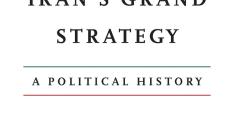The Lethal Artificial Intelligence Problem

"Autonomous weapons are artificial intelligence systems that are programmed to kill.” Future of Life Institute
The development of lethal artificial intelligence will pose fundamental problems for the stability of the international system and will alter regional security dynamics. States should adopt a preventative prohibition of the weaponization of artificial intelligence, based upon the precautionary principle of international law, and upon previous cases where prevention brought stability to all countries. States will meet at the United Nations in April 2016 to decide what to do.
Leading scientists working on artificial intelligence argue that the militarization and use of lethal artificial intelligence would be a highly destabilizing development as such weapons represent the third major transformation in the nature of war (the first and second transformations being gunpowder and then nuclear weapons). They caution that the deployment of such weapons will alter the future of peace and security for the worse, and they advise that a lethal autonomous arms race could be prevented by a ban on offensive autonomous weapons. It is an important signal when the scientists and industry leaders call for a halt in the development of their technology based on what they fear could go wrong.
I examined twenty-two existing treaties that acted under a “precautionary framework” to establish new regimes of prohibition or control of weapons systems that had been deemed to be destabilizing. These treaties - that range from nuclear weapons free-zones to the prohibition of the placement of weapons on Antarctica and on the moon to the making of unacceptable weapons unlawful - achieved one or all of three goals: prevented further militarization or arms races, made weaponization unlawful, and stopped proliferation with the establishment of cooperative frameworks of transparency and common rules.
As a result of my findings, it is clear that there is a significant emerging norm in regards to all weapons systems: the utilization of disarmament and arms regulations as a tool and mechanism to protect civilians. The development of lethal autonomous weapons systems would severely jeopardize this global norm. The United Nations has celebrated its 70th anniversary, its long and fruitful existence had led to the construction of an edifice of peace and security that shapes and defines international relations in the 21st century. The development of lethal autonomous weapons will undermine the legal and political architecture of peace and security built during the life of the UN.
This edifice of peace and security is built upon three pillars, all of which are the result of the intense codification of international law through treaties and cooperation among states: the first pillar is the regulation of war and the prohibition of the use of force with the accompanying global norm of peaceful settlement of disputes between states and increasingly other actors. The second pillar is composed of the dense network of global norms that constrain and guide the behavior of states. This includes an extensive array of treaties that form numerous governance regimes and comprise an elaborate framework of transparency, confidence building, and security mechanisms put in place to maintain peace and security. The third pillar is built upon a structure that fosters cooperation in cultural, economic, social, and environmental matters that affect all humanity and tackle problems that must be solved collectively.
The First Pillar and the Problems Posed by Lethal Autonomous Weapons:
The first pillar upholding peace and security through the prohibition of the use of force in the conduct of international relations is anchored in two overarching norms that guide states: peaceful settlement of disputes (through international and regional courts), and international organizations.
The revolution catalyzed by lethal autonomous weapons will give rise to two important questions before the international community. First, should a lethal autonomous arms race be preventively stopped before it is initiated? Second, should humanity go ahead and allow autonomous weapons to be empowered to kill? The answers to these questions pose a dilemma to international law: how will this revolution in warfare impact the framework that has developed regarding the peaceful settlement of disputes?
To say that existing international law frameworks will suffice appears complacent to a not-so-distant future that will bring perils that we can prevent now. Lethal autonomous weapons will make war easier to pursue. War becomes easier to declare the greater the distance between the attackers and the attacked, as the risk to the attacker is lowered.
The adoption of lethal autonomous weapons in warfare will mean the lowering of the established thresholds for the use of force, which have been carefully built by international law since the founding of the United Nations. The breakdown of such norms may even lead to an increase in violence between states that do not have autonomous weapons systems. The disintegration of such norms will make fragile conflict situations more precarious. The creation and use of such weapons may also give countries that are technologically superior the feeling that they can use such weapons in disregard of the long established global rules that all actors must abide by.
In sum, the unlawful use of force, or the severe erosion of the existing thresholds for the exercise of force in international relations will only contribute to weakening the existing system of the rule of law where solving disputes and problems peacefully should take precedence.
The Second Pillar and the Problems Posed by Lethal Autonomous Weapons:
The second pillar is formed by a dense web of global norms that states must operate in to maintain peace and security. The twenty-two treaties examined here, of a precautionary nature, represent the effort to create common global norms. Without a doubt we live in an era where moral and ethical progress in international relations can be seen through the formation of commonly agreed global norms regulating conduct amongst states.
Some behaviors that were considered normal, such as piracy, torture, slavery, and imperial annexation are now prohibited under international law. Of particular concern is under what conditions new lethal autonomous weapons systems will alter the foundational global norms that comprise the rules of international protection of human rights (HRL) and international humanitarian law (IHL) and how these weapons will disrupt the regulation of war and conflict under the rules of the UN Charter.
The development of lethal autonomous weapons systems gives rise to concerns from both a human rights and IHL perspective – the architectures of which would be particularly disrupted with the development of such new weapons systems. For both IHL and HRL, the central precepts and requirements are accountability for actions during violent conflict, and the ability to understand the vast number of rules that these branches comprise.
The protection of the dignity of the human being is a basis for peace and prosperity in the world.
The right to life is essential and the arbitrary deprivation of life is not acceptable under International Law. The right to dignity underlies all rights. Being killed by an autonomous machine appears likely to violate the right to dignity.
Taken together, these two branches of International Law: HRL and IHL, serve as the key to humanities moral judgements due to their focus on protection of life. They represent a manifest indication of progress in international relations and inaugurate a new era for humankind, with a distinctly humanitarian tenor. The universal global norms protecting human rights through humanitarian law form part of the integral consciousness of humanity and form a common legal code that is broadly adhered to. Seventy years into this new normative order, there remain urgent challenges and complexities that need to be addressed. How to best protect the dignity of the individual from the worst atrocities and disrespect of the global norms of humanity remains a primary concern.
It is critical to determine how existing branches of international law apply to protect civilians from harm, and whether what currently exists is sufficient to address the challenges posed by the development of new weapons and technologies.
The fact that a particular means or method of warfare is not specifically regulated does not mean that it can be used without restriction. This does not, however, mean that laws cannot be strengthened or that new laws do not need to be created to address future arms and technologies. How to create governance frameworks and what they should include is urgent.
Sustaining global peace and security norms requires transparency, confidence building, and security mechanisms (alliances, arms control agreements, nuclear weapons free zones (NWFZs), joint operations, disarmament, conflict resolution, peace-keeping and reconciliation). Much of this stabilizing framework has been set and constructed at the regional level, such as existing NWFZs. The creation of a new weapon system, in the realm of artificial intelligence, will require a totally new expensive political and legal structure.
At the global level, transparency could become more problematic with the advent of lethal autonomous weapons. What exists now under Article 36 mandates states to conduct reviews of new weapons to assess where they are compliant with IHL. However, only a handful of states carry out weapons reviews regularly, which makes this transparency mechanism insufficient as a tool for creating security frameworks for future arms and technologies or enhancing transparency as a global norm.
The Third Pillar and the Problems Posed by Lethal Autonomous Weapons:
The third pillar of peace and security today is comprised by the efforts to foster cooperation in cultural, economic, social, and environmental matters that affect all humanity and tackle problems that can only be solved collectively.
Two recent major achievements by all member states of the United Nations must be highlighted in order to understand how the world can tackle economic, social, and environmental problems in a holistic way: the new United Nations Sustainable Development Goals, and the Paris Agreements on Climate Change.
United Nations Charter article 26, which represents a foundational guide. It calls on all states, under the auspices and responsibility of the Security Council, to create a system for the regulation of armaments that will focus on the promotion and maintenance of international peace and security. It additionally calls on states to ensure that as little of the world’s human and economic resources are used for the creation and maintenance of armaments.
United Nations member states have achieved great strides in reaching Article 26’s mandate, but much more needs to be done. There is no doubt that establishing such systems regulating arms, which are of course at the heart of states’ national security, is costly and demanding. The elaborate legal political framework to contain the risks, and avoid the proliferation, of nuclear weapons serves as a useful example.
Complying, and ensuring others comply, has taken an enormous amount of time and treasure, and diverted states’ energies and resources. In the case of autonomous lethal weapons systems the best strategy at this critical juncture for humanity is to ban them as they would absolutely divert the world’s human and economic resources. The UN Charter created a rule of law order that has the potential to be an equalizer in international relations. A destabilizing weapon system that is deemed to be transformative of the nature of war and peace could create a dual-power structure of haves and have-nots.
Avenues for the way forward
“Preventive security governance” is the best option for a peaceful future, and is based upon the principles of international law. Preventive security governance is a strategy to curtail uncertainty regarding the ability to preserve stability and international order. It is the codification of specific or new global norms arising from existing international law that will clarify expectations and universally agreed behavior on a given issue-area. Such an issue-area is characterized by no rules or by the imprecision of extant rules.
In the next fifteen years, states should focus all their attention on continuing to construct the architecture of peace. These efforts have the ability of bringing the international community together at this critical juncture. Anything so costly and precariously unpredictable as lethal artificial intelligence would be a distraction from the goals of upholding international security.
Historically, several states have embraced efforts to prohibit superfluous and unnecessary armaments. In my research, I have found that individual states can become champions of such causes and unleash real progress in disarmament diplomacy.
The launch of a transnational campaign is another key element to summon awareness at several levels of diplomatic and global action. The Stop Killer Robots Campaign is in place and is attracting an unprecedented positive response from around the world.
Another arms race will make everyone less secure and leave the world worse off. Just as nuclear weapons effectively created a dual structure of power in international relations, if lethal autonomous artificial intelligence arises, this new disruptive weapon system will create another parallel system of double-power imbalances.
A preventive ban on lethal autonomous weapons is the vital first step in setting a principled limit on the development of unnecessary and destabilizing weapons that have the potential to violate international law. A ban would also be a critical tool in the effort to regulate other robotics and nascent technology that could undermine international peace and security.
Shared collective action is needed to promote a more secure world, and these efforts should be founded on the gains that have been previous made for national security through the use of preemptive action banning dangerous weapons. The need for prevention instead of reaction is a moral imperative. In the case of lethal autonomous weapons, In the case of lethal autonomous weapons, even if they comply with IHL, they will have a disintegrating effect on the commonly agreed rules of international law.
Lethal autonomous weapons will make warfare unnecessary more indiscriminant. They are, additionally, an expensive option, particularly at a time when nations are often looking to cut spending. Further, their creation will create tremendous uncertainty in the world system, and greatly complicate the creation of national defense policies. Countries that develop and deploy such weapons risk losing the ability to shape global discourse in an era that is focused on increasing regional and international frameworks focused on improving peace and security. Nations today have one of the greatest opportunities in history to promote a better future by creating a protocol that will preventively prohibit the weaponization of artificial intelligence.
We cannot abrogate our responsibility about how the future of peace and security will look like.
Denise Garcia is interested in global governance of security and international law. She is the Sadeleer Research Faculty and associate professor in the Department of Political Science and the International Affairs program at Northeastern University in Boston. She is the author of Small Arms and Security – New Emerging International Norms, and Disarmament Diplomacy and Human Security – Norms, Regimes, and Moral Progress in International Relations. Her articles have appeared in Foreign Affairs, Third World Quarterly, Global Policy Journal, International Relations, International Studies Perspectives, the African Security Review, and elsewhere. Prior to joining the faculty of Northeastern University in 2006 (tenured in 2012), Garcia held a three year appointment at Harvard, and lived for several years in Geneva. She is a member of the Academic Council of the United Nations, the International Committee for Robot Arms Control, the Arms Control Association, and the Global South Unit for Mediation. Her hobbies include yoga and surfing.
Photo credit: Don McCullough via Foter.com / CC BY

